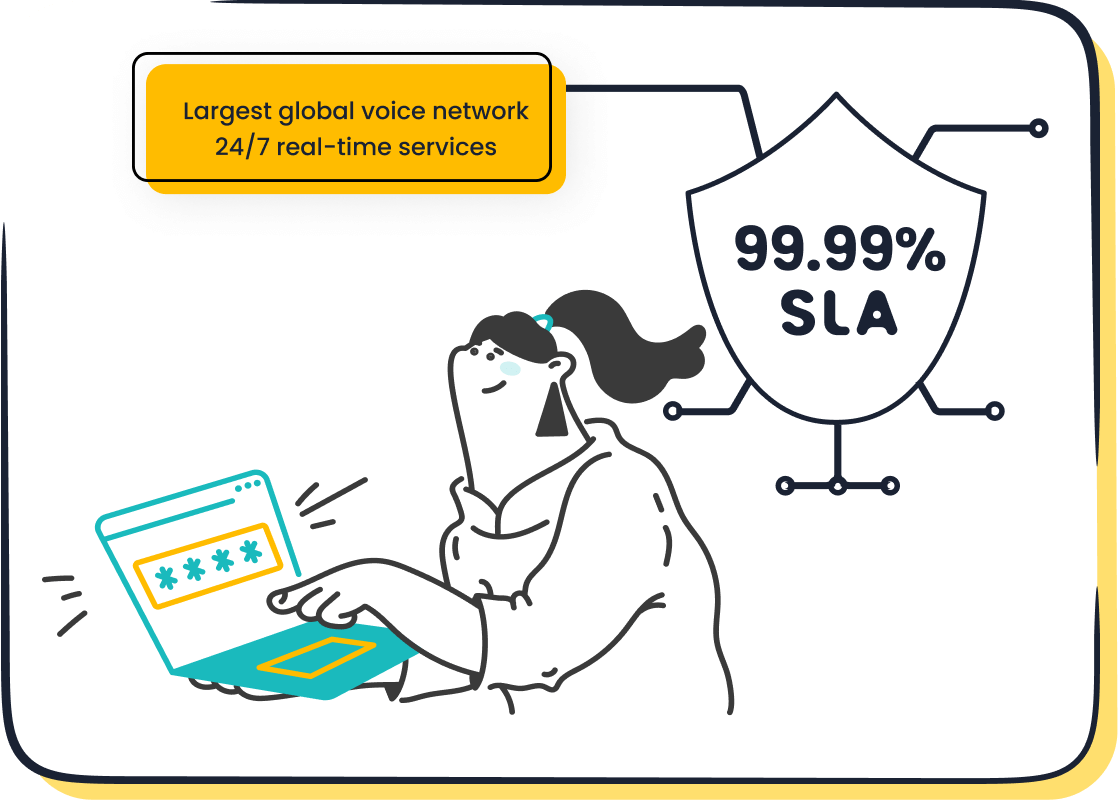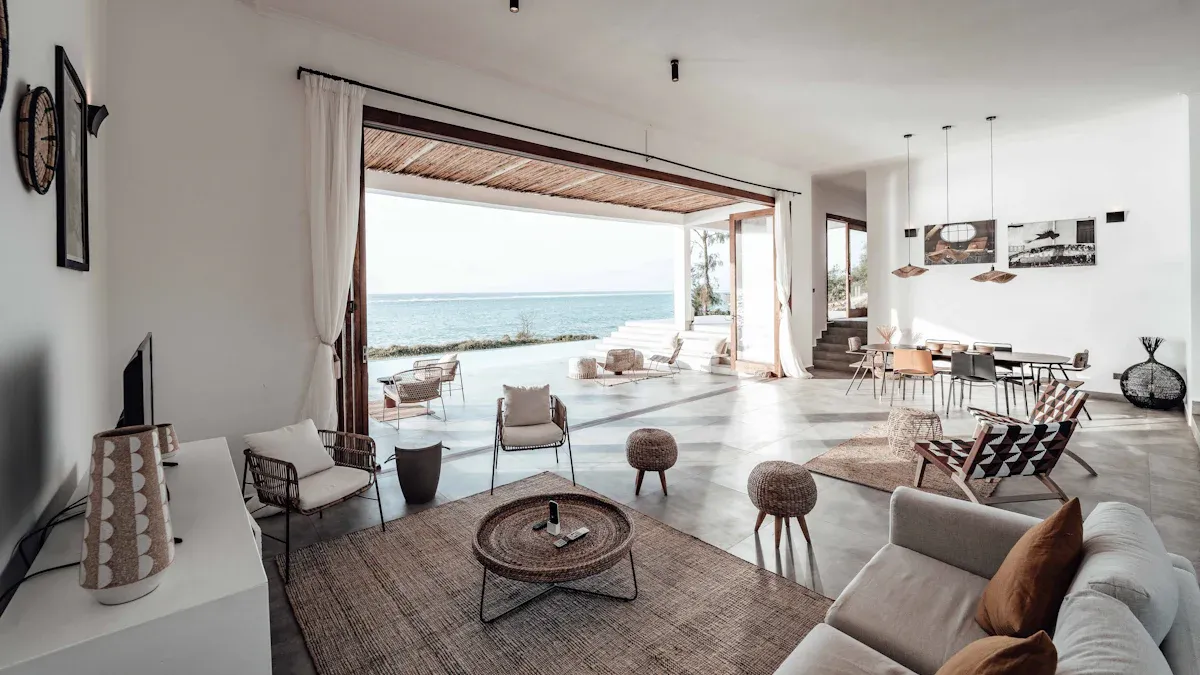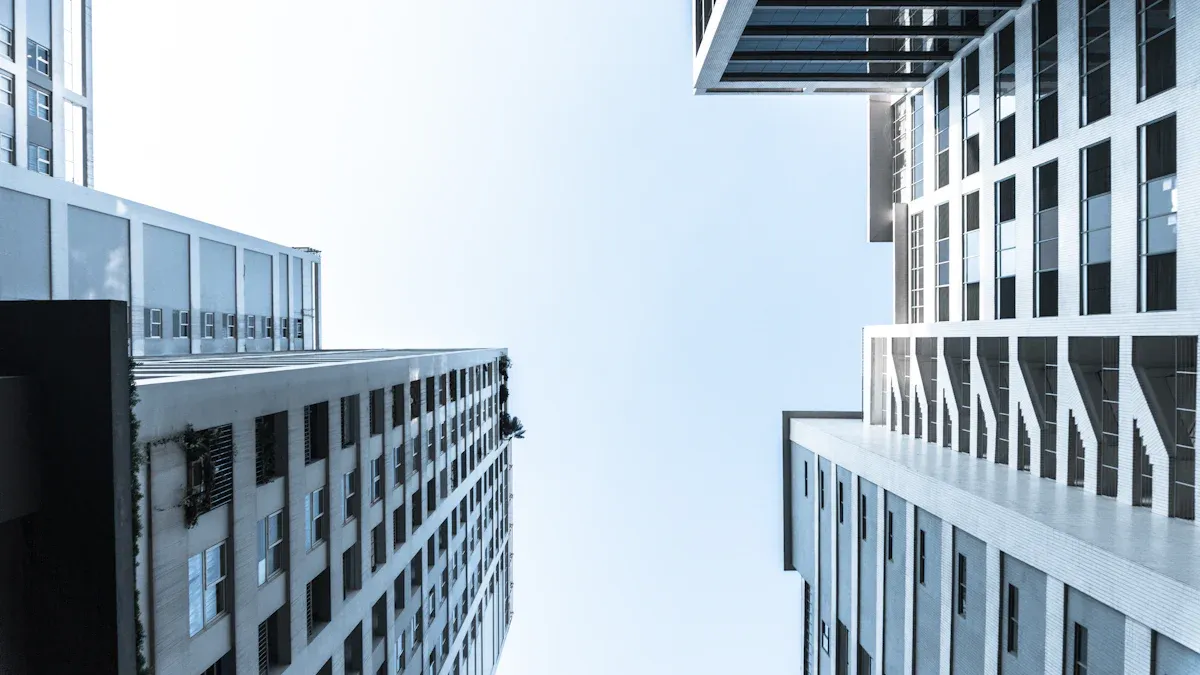Top Strategies to Maximize Occupancy Rates in 2025

Occupancy rates (ocr) play a pivotal role in determining the profitability and long-term success of commercial real estate. A healthy occupancy rate, often above 90% in mixed-use developments, reflects strong demand and effective tenant retention. However, recent trends reveal a national occupancy rate drop to 93.9%, the lowest since 2013, coupled with rising vacancy rates at 6.5%. These shifts highlight the growing challenges posed by increased construction and evolving tenant expectations. Factors like location, property condition, and flexible lease terms now significantly influence high occupancy rates. Leveraging innovative tools, such as Sobot’s advanced communication solutions, can help property managers address these challenges effectively. By adopting technology-driven strategies, you can enhance tenant satisfaction and maintain competitive occupancy rates in a dynamic market.
Enhance Marketing to Improve Occupancy Rates
Leverage Digital Platforms
Optimize property listings on commercial real estate websites.
To boost occupancy rates, you need to ensure your property listings stand out on popular commercial real estate websites. High-quality visuals and detailed descriptions are essential. Include professional photos, virtual tours, and key details like square footage, amenities, and proximity to local attractions. Modern property management software can automate listing updates, ensuring your information stays accurate and appealing to potential tenants. This approach not only saves time but also helps you respond quickly to inquiries, improving your chances of securing leases.
Use targeted online ads to reach specific tenant demographics.
Targeted advertising is one of the most effective marketing strategies for reaching the right tenant mix. Platforms like Google Ads and social media allow you to tailor campaigns based on demographics, interests, and location. For example, if you manage a hotel near a business district, you can target corporate travelers with ads highlighting your meeting rooms and flexible booking options. This precision ensures your marketing budget is spent effectively, helping you boost occupancy rates while attracting tenants who align with your property's unique offerings.
Build a Strong Online Presence
Develop a professional website showcasing property features and benefits.
A professional website serves as the cornerstone of an appealing online presence. Your site should be user-friendly, mobile-responsive, and optimized for search engines. Include high-quality visuals, testimonials, and a clear call-to-action for inquiries. For example, a hotel website could feature a booking widget, while a commercial real estate site might include a contact form for leasing inquiries. Sobot's Voice/Call Center can integrate seamlessly with your website, enabling you to manage tenant inquiries efficiently and enhance customer satisfaction.
Use social media to engage with potential tenants and share updates.
Social media platforms like Instagram, LinkedIn, and Facebook are invaluable for engaging with potential tenants. Share updates about your property, such as new amenities or tenant success stories. For instance, a hotel could post photos of a newly renovated lobby, while a commercial property might highlight a tenant's business milestone. Social media fosters trust and builds relationships, ultimately driving more inquiries and improving occupancy rates.
Network with Local Businesses
Partner with local organizations to attract tenants.
Collaborating with local businesses and organizations can help you attract a diverse tenant mix. For example, partnering with a nearby coworking space could bring in startups looking for office space. Similarly, hotels can team up with local event planners to host conferences or weddings, filling rooms during off-peak seasons. These partnerships create mutually beneficial opportunities that boost occupancy rates.
Attend industry events to build connections.
Industry events provide excellent opportunities to network with potential tenants and partners. Attend trade shows, real estate expos, or local business meetups to showcase your property and learn about tenant needs. For instance, a hotel manager might connect with travel agencies, while a commercial property owner could meet entrepreneurs seeking retail space. Building these relationships can lead to long-term leases and high occupancy rates.
Focus on Tenant Retention to Maintain High Occupancy Rates
Strengthen Tenant Communication

Use tools like Sobot's Voice/Call Center for seamless tenant interactions.
Effective tenant communication is essential for improving tenant retention. Tools like Sobot's Voice/Call Center simplify communication by offering features such as intelligent call routing, real-time monitoring, and AI-powered voicebots. These tools allow you to address tenant concerns promptly and efficiently. For example, a hotel manager can use Sobot's system to handle guest inquiries about room availability or maintenance requests without delays. This streamlined approach enhances tenant satisfaction, which directly impacts occupancy rates.
Provide regular updates and address tenant concerns promptly.
Keeping tenants informed about property updates or maintenance schedules builds trust. Regular communication through newsletters, emails, or tenant portals ensures transparency. For instance, notifying tenants about upcoming renovations or new amenities can foster a sense of inclusion. Promptly addressing concerns, such as fixing a broken elevator in a hotel, demonstrates your commitment to tenant well-being. Studies show that addressing concerns quickly can increase retention rates by 15-20%.
Offer Lease Renewal Incentives
Provide discounts or upgrades for long-term tenants.
Lease renewal strategies like offering rent discounts or property upgrades can significantly improve tenant retention. For example, a hotel might offer discounted rates for corporate clients who book long-term stays. Similarly, upgrading office spaces with modern furniture can encourage tenants to renew leases. According to research, renewal incentives can boost retention rates by 20-25%, making them a cost-effective way to maintain high occupancy rates.
Create flexible lease terms to meet tenant needs.
Flexible leasing options cater to the diverse needs of tenants. Offering month-to-month leases or adjustable terms can attract tenants who value adaptability. For instance, a hotel could provide flexible booking options for business travelers. This approach not only improves tenant satisfaction but also ensures a high occupancy rate by accommodating various tenant preferences.
Enhance Tenant Experience
Ensure prompt maintenance and repairs.
Timely maintenance is a cornerstone of tenant satisfaction. Addressing issues like plumbing or HVAC repairs quickly shows tenants that their comfort is a priority. For example, a hotel that resolves maintenance requests within 24 hours can enhance guest loyalty. Data reveals that timely maintenance resolution leads to higher tenant satisfaction and retention, ultimately improving occupancy rates.
Organize community events to foster tenant relationships.
Community-building activities create a sense of belonging among tenants. Hosting events like networking mixers or holiday celebrations can strengthen tenant relationships. For instance, a hotel could organize a wine-tasting evening for guests. These efforts not only improve tenant retention but also attract new tenants, contributing to high occupancy rates.
Tip: Implementing tenant retention strategies can help property managers retain up to 70% of tenants in commercial real estate. It is also five times cheaper to retain existing tenants than to acquire new ones.
Upgrade Property Features to Attract Tenants

Modernize Facilities
Invest in energy-efficient systems and smart building technology.
Modernizing your facilities with energy-efficient systems and smart building technology can significantly enhance your property's appeal. For example, installing centralized lighting and HVAC controls can reduce energy costs by up to 70%. Smart building technology, such as automated energy management systems, not only lowers operational expenses but also attracts environmentally conscious tenants. In commercial real estate, lighting accounts for about 40% of energy costs. By upgrading to energy-efficient lighting systems, you can save 30-60% on lighting expenses annually. These upgrades improve tenant satisfaction and contribute to achieving high occupancy rates.
Update common areas to create a welcoming environment.
Common areas play a crucial role in shaping tenant impressions. Upgrading these spaces with modern flooring, comfortable seating, and energy-efficient windows can make your property more inviting. For instance, a hotel lobby with updated furniture and stylish decor creates a positive first impression for guests. Adding amenities like free Wi-Fi or charging stations in shared spaces further enhances tenant experience. A well-maintained property with modernized property amenities sets a positive tone, encouraging tenants to stay longer and attracting new ones.
Improve Accessibility
Add features like ramps and elevators for inclusivity.
Improving accessibility broadens your property's market reach. Features like ramps, elevators, and wider doorways make your property more inclusive for individuals with disabilities, seniors, and families with strollers. According to the World Health Organization, over 1 billion people globally live with some form of disability. By catering to this significant market segment, you can increase bookings and improve occupancy rates. For example, a hotel with accessible rooms and facilities can attract a diverse range of guests, boosting its appeal in the competitive commercial real estate market.
Ensure compliance with ADA standards.
Compliance with the Americans with Disabilities Act (ADA) is not just a legal requirement but also a strategic move to attract tenants. ADA-compliant properties demonstrate a commitment to inclusivity, which resonates with tenants and guests. For instance, a hotel that offers ADA-compliant rooms and parking spaces can attract more bookings from travelers with specific needs. Ensuring compliance also reduces the risk of legal issues, making your property a safer and more attractive choice for tenants.
Enhance Security Measures
Install surveillance cameras and access control systems.
Security is a top priority for tenants in commercial real estate. Installing surveillance cameras in common areas and access control systems at entry points enhances safety and deters unauthorized access. For example, a hotel with keyless entry systems allows guests to access their rooms using unique codes or smartphone apps, improving convenience and security. These measures build tenant confidence, which directly impacts occupancy rates.
Provide well-lit parking areas and entrances.
A well-lit property creates a sense of safety for tenants and guests. Bright parking areas and entrances reduce the risk of accidents and deter criminal activity. For instance, a hotel with well-lit parking lots ensures guests feel secure when arriving late at night. Enhanced lighting also improves the property's curb appeal, making it more attractive to potential tenants. These small but impactful upgrades contribute to higher tenant satisfaction and retention.
Leverage Technology for Occupancy Rate Strategies

Use Advanced Property Management Tools
Streamline lease management and tenant communication with Sobot's Voice/Call Center.
Advanced property management tools simplify operations and improve efficiency in commercial real estate. Sobot's Voice/Call Center offers features like intelligent call routing, real-time monitoring, and AI-powered voicebots. These tools streamline tenant communication, ensuring inquiries and concerns are addressed promptly. For example, a hotel manager can use Sobot's system to handle booking queries or maintenance requests efficiently. Properties using such platforms report higher occupancy rates due to improved operational workflows and tenant satisfaction.
Automate rent collection and maintenance requests.
Automation reduces manual tasks, saving time and minimizing errors. Modern property management software automates rent collection and tracks maintenance requests, ensuring timely resolutions. For instance, a hotel can use automated systems to schedule regular HVAC servicing, enhancing the guest experience. Tracking occupancy and vacancy rates through these tools also helps identify trends, enabling proactive adjustments to maintain high occupancy rates.
Implement Virtual Tours
Offer 3D walkthroughs to attract remote tenants.
Virtual tours have transformed how tenants explore properties. A 3D walkthrough allows potential tenants to view spaces remotely, increasing engagement. Statistics show that 35% of tenants prefer virtual tours over traditional showings, and listings with professional virtual tours see a 50% increase in views. For a hotel, offering virtual tours of rooms and amenities can attract international guests, boosting occupancy rates.
Use augmented reality to showcase potential upgrades.
Augmented reality (AR) enhances tenant decision-making by visualizing upgrades. For example, a hotel could use AR to show how a room would look with modern furniture or decor. This technology appeals to tenants seeking customizable spaces, improving their overall experience. Over 50% of overseas tenants prefer virtual viewings, making AR a valuable tool for attracting a global audience.

Analyze Data for Insights
Track occupancy trends and tenant preferences.
Data analytics provides actionable insights for improving occupancy rates. Monitoring occupancy trends helps identify performance gaps and adjust strategies. For instance, a hotel noticing a decline in weekend bookings can launch targeted campaigns to attract leisure travelers. Tracking tenant preferences also enables personalized services, enhancing the guest experience and fostering loyalty.
Use predictive analytics to anticipate market changes.
Predictive analytics helps property managers stay ahead of market shifts. By analyzing seasonal trends and demographic changes, you can forecast demand fluctuations. For example, a hotel can adjust pricing during peak travel seasons to maximize revenue. Competitive market analysis also refines marketing strategies, ensuring your property remains attractive in a dynamic market.
| Trend | Description |
|---|---|
| Strategic Occupancy Forecasting | Anticipates demand fluctuations by analyzing seasonal trends, market shifts, and demographic changes. |
| Competitive Market Analysis | Tracks rental trends and local economic shifts to adjust pricing and refine marketing strategies. |
| Data-Driven Maintenance | Schedules preventive work based on historical data to reduce costs and enhance resident satisfaction. |
| Real-Time Insights | Gathers feedback to address resident needs and improve satisfaction through timely responses. |
Tip: Leveraging technology not only improves operational efficiency but also enhances the guest experience, ensuring high occupancy rates in commercial real estate.
Build Strong Relationships to Improve Occupancy Rates
Personalize Tenant Interactions
Tailor communication to individual tenant needs.
Personalized communication strengthens tenant relationships and improves retention. By understanding individual preferences, you can tailor messages to address specific needs. For instance, a hotel catering to business travelers might send updates about conference room availability or nearby networking events. Properties that resolve over 90% of maintenance requests within 48 hours see a 12% higher renewal rate. Tools like Sobot's Voice/Call Center streamline communication by offering features such as intelligent call routing and AI-powered voicebots, ensuring tenants feel valued and heard.
Celebrate tenant milestones, such as anniversaries.
Recognizing milestones fosters a sense of belonging. Sending a personalized note or small gift on a tenant's lease anniversary can leave a lasting impression. For hotels, celebrating repeat guests with loyalty rewards or complimentary upgrades enhances guest satisfaction. Active tenant loyalty programs have been shown to increase positive feedback by 27% and improve perceived property value by 19%. These gestures build goodwill and encourage long-term relationships.
Provide Value-Added Services
Offer coworking spaces or shared amenities.
Modern tenants value convenience and functionality. Adding coworking spaces, fitness centers, or communal lounges can make your property more appealing. A JLL study highlights the growing demand for tenant amenities, with features like EV charging stations and cafes ranking high on tenant wish lists. For hotels, offering shared workspaces or dining options can attract both leisure and business travelers, boosting occupancy rates. These amenities not only enhance tenant satisfaction but also position your property as a competitive choice in the commercial real estate market.
Provide resources for tenant business growth.
Supporting tenant success benefits both parties. For example, offering workshops, networking events, or access to business resources can help tenants thrive. Hotels can partner with local businesses to provide exclusive discounts or services to guests. Utilizing data from previous tenant interactions allows you to create targeted campaigns that promote relevant services, further strengthening tenant loyalty. These efforts demonstrate your commitment to tenant success, fostering long-term occupancy.
Foster a Sense of Community
Create networking opportunities among tenants.
Community-building activities encourage tenant interaction and loyalty. Hosting events like holiday parties, fitness classes, or professional mixers can foster connections. For hotels, organizing wine tastings or cultural evenings can enhance the guest experience. Shared spaces also play a role in creating a sense of belonging. Kingsley Associates found that communication satisfaction correlates with lease renewal rates, reaching as high as 87% for satisfied tenants. A connected community leads to higher tenant retention and occupancy rates.
Encourage feedback and implement suggestions.
Actively seeking tenant feedback builds trust and improves satisfaction. Implementing feedback mechanisms, such as surveys or suggestion boxes, helps you understand tenant preferences and concerns. For example, a hotel that adjusts its breakfast menu based on guest feedback demonstrates attentiveness. Studies show that 88% of commercial real estate landlords value tenant preference data in their strategies. Acting on feedback strengthens tenant relationships and ensures your property meets their evolving needs.
Tip: Building strong relationships with tenants not only improves retention but also enhances your property's reputation, leading to high occupancy rates in competitive markets.
Maximizing occupancy rates in 2025 requires a multi-faceted approach. By enhancing marketing efforts, retaining tenants through personalized communication, and upgrading property features, you can create a competitive edge. Leveraging technology, such as Sobot's Voice/Call Center, streamlines operations and improves tenant satisfaction. Building strong relationships fosters loyalty and ensures long-term success.
Key performance indicators, like occupancy rate and lead-to-lease conversion rate, validate these strategies. For example, tracking average days to lease helps identify areas for improvement, while revenue per available room highlights financial performance.
Take proactive steps to implement these strategies. Explore tools like Sobot's solutions to simplify tenant interactions and achieve high occupancy rates in commercial real estate. Whether managing a hotel or other property, these actions ensure sustainable growth and profitability.
| KPI | Description |
|---|---|
| Occupancy Rate | Measures the percentage of available rooms that are occupied. |
| Average Days to Lease | Indicates the average time taken to lease a property. |
| Lead-to-Lease Conversion Rate | Reflects the effectiveness of converting leads into actual leases. |
| Revenue per Available Room | Assesses the revenue generated per available room, crucial for financial performance evaluation. |
Tip: Start small by optimizing one area, such as tenant communication, and gradually expand your efforts to achieve consistent results.
FAQ
What are occupancy rates, and why are they important?
Occupancy rates measure the percentage of rented or occupied units in a property. They indicate the property's performance and profitability. For example, a hotel with high occupancy rates generates more revenue, while low rates may signal issues like poor marketing or high vacancy.
How can technology help reduce vacancy rates?
Technology streamlines operations and improves tenant satisfaction. Tools like Sobot's Voice/Call Center automate communication and track tenant needs. For instance, a hotel can use AI-powered voicebots to handle booking inquiries, reducing vacancy and improving occupancy rate efficiency.
What factors influence high occupancy rates in commercial real estate?
Factors include location, property condition, and tenant retention strategies. For example, a well-maintained property with modern amenities attracts tenants. Offering flexible lease terms and ensuring prompt maintenance also help maintain high occupancy rates.
How do virtual tours impact tenant decisions?
Virtual tours allow tenants to explore properties remotely. A 3D walkthrough of a hotel room or office space saves time and attracts tenants from different locations. Listings with virtual tours receive 50% more views, reducing vacancy and boosting occupancy rates.
Why is tenant retention crucial for commercial real estate?
Retaining tenants reduces vacancy and ensures consistent revenue. It costs five times more to acquire a new tenant than to retain an existing one. Strategies like personalized communication and lease renewal incentives foster loyalty and improve occupancy rates.
See Also
Best Call Center Analytics Tools You Need in 2024
Leading Contact Center Solutions Evaluated for 2024
Best Cloud Contact Center Solutions to Consider in 2024
Enhance SaaS Customer Support Using Live Chat Techniques
Ten Essential Steps for Omnichannel Contact Center Implementation